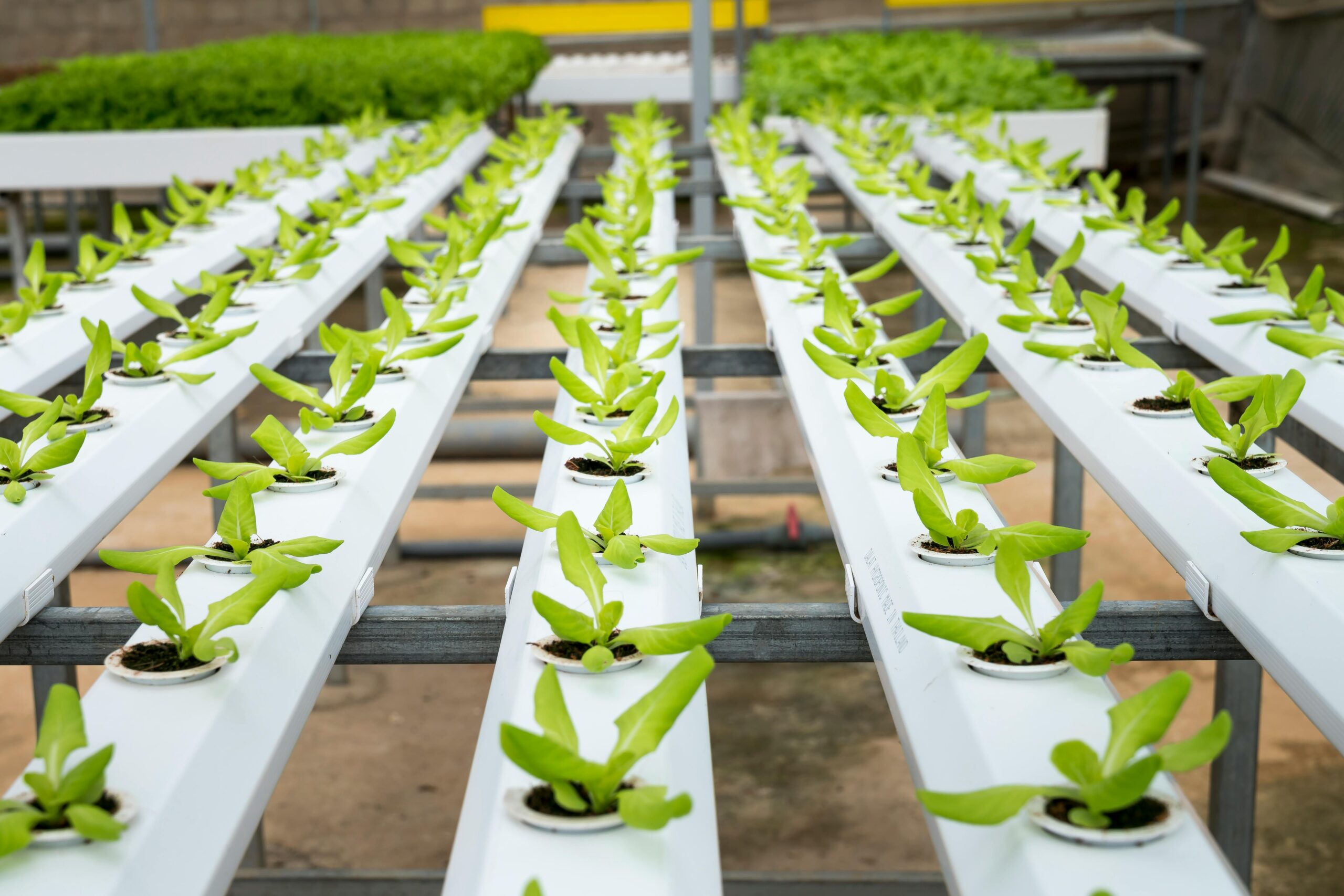Agroforestry, a sustainable farming practice that combines agriculture and forestry, is gaining popularity as an effective solution for addressing environmental concerns while ensuring food security. This innovative approach offers a myriad of benefits, from promoting biodiversity and enhancing soil health to mitigating climate change impacts. In this article, we explore the fascinating world of agroforestry, its principles, and the numerous advantages it brings to farmers, communities, and the planet as a whole. Join us as we delve into the intricacies of this harmonious blend of agriculture and forestry, and discover how agroforestry is paving the way towards a greener and more sustainable future.
The Principles of Agroforestry
Agroforestry is based on a set of principles that aim to create a harmonious and sustainable system. Let’s explore these principles:
1. Integration of Trees with Crops and Livestock
At the core of agroforestry is the intentional integration of trees with crops and livestock. This integration creates a mutually beneficial relationship where each component supports and enhances the growth and productivity of the others. Trees provide shade, windbreaks, and habitat for beneficial organisms, while crops and livestock contribute to the nutrient cycle and help manage weed and pest control.
2. Diversification
Agroforestry encourages the diversification of plant and animal species within the system. By incorporating a variety of crops, trees, and livestock, farmers can reduce the risk of crop failure, increase resilience to pests and diseases, and optimize the use of available resources. Diversification also enhances biodiversity, attracting pollinators and beneficial insects, and creating a thriving ecosystem.
3. Synergies and Complementarity
Agroforestry systems are designed to maximize synergies and complementarity between different components. For example, certain tree species can fix nitrogen from the atmosphere, enriching the soil and benefiting nearby crops. Similarly, the shade provided by trees can help protect sensitive crops from extreme temperatures and reduce water evaporation from the soil, improving overall water-use efficiency.
4. Multiple Outputs and Income Streams
Agroforestry systems offer multiple outputs and income streams for farmers. They can harvest timber, fruits, nuts, and other non-timber forest products from the trees, while also benefiting from the sale of crops and livestock. This diversification of income sources provides economic stability and resilience, reducing dependence on a single product and contributing to rural livelihoods.
5. Sustainability and Long-Term Planning
Agroforestry is rooted in sustainable practices and long-term planning. By integrating trees, crops, and livestock, farmers can improve soil fertility, reduce erosion, and enhance water and nutrient cycling. Agroforestry systems are designed to be resilient to climate change, adapting to changing conditions and minimizing the use of external inputs such as fertilizers and pesticides. This long-term perspective ensures the viability and sustainability of the system over time.
These principles form the foundation of agroforestry practices, paving the way for a more sustainable and productive approach to farming. In the next section, we will delve deeper into the different types of agroforestry systems and their specific benefits.
Types of Agroforestry Systems
Agroforestry encompasses a wide range of systems that can be adapted to different climatic conditions, landscapes, and farming objectives. Let’s explore some of the most common types:
1. Alley Cropping
Alley cropping involves planting rows of trees or shrubs alongside crops in a spaced arrangement. The trees provide shade, windbreaks, and organic matter when their leaves fall, enriching the soil. This system improves soil fertility, reduces erosion, and provides additional income through the sale of timber or non-timber forest products.
2. Silvopasture
Silvopasture combines trees, forage crops, and livestock grazing. Trees are strategically planted in pastures to provide shade for animals, reducing heat stress and improving animal welfare. The trees also contribute to soil fertility and carbon sequestration, while the livestock help manage vegetation and contribute to nutrient cycling.
3. Forest Farming
Forest farming involves cultivating high-value specialty crops, such as medicinal herbs, mushrooms, or fruits, under the shade of a managed forest. This system mimics the natural forest ecosystem, utilizing the vertical space and providing a diverse range of products while protecting the forest and promoting biodiversity.
4. Windbreaks and Shelterbelts
Windbreaks and shelterbelts are linear plantings of trees or shrubs that act as barriers to reduce wind speed and protect crops, livestock, and farm infrastructure from wind damage. They also help control soil erosion, enhance biodiversity, and create microclimates that favor crop growth.
5. Riparian Buffer Zones
Riparian buffer zones are strips of trees and vegetation planted along riverbanks or water bodies. They help filter pollutants, reduce soil erosion, and improve water quality by preventing runoff from entering the water. Riparian buffer zones also provide habitat for wildlife and contribute to the overall health of aquatic ecosystems.
These are just a few examples of the diverse agroforestry systems that farmers can adopt. The choice of system depends on factors such as climate, soil conditions, available resources, and farming objectives. Regardless of the specific system chosen, agroforestry offers a holistic approach to agriculture that promotes sustainability, biodiversity, and resilience.
The Benefits of Agroforestry
Agroforestry brings a wide range of benefits that contribute to environmental sustainability, economic viability, and social well-being. Let’s explore some of the key advantages:
1. Climate Change Mitigation
Agroforestry plays a crucial role in mitigating climate change. Trees act as carbon sinks, sequestering and storing atmospheric carbon dioxide. The combination of trees with crops and livestock enhances carbon sequestration potential, reducing greenhouse gas emissions from agricultural activities. Agroforestry also helps to regulate local microclimates, mitigating the impact of extreme weather events.
2. Soil Health and Fertility
Agroforestry systems promote soil health and fertility through various mechanisms. The presence of trees improves soil structure, increases organic matter content, and enhances nutrient cycling. Tree roots help to stabilize the soil, preventing erosion and nutrient runoff. This leads to improved soil water-holding capacity and nutrient availability, resulting in healthier and more productive agricultural lands.
3. Biodiversity Conservation
Agroforestry provides habitat and promotes biodiversity conservation. The diverse vegetation in agroforestry systems attracts a wide range of insects, birds, and other wildlife, creating ecological corridors and enhancing overall biodiversity. This contributes to the preservation of native plant and animal species, ecological balance, and the provision of ecosystem services such as pollination and natural pest control.
4. Water Management
Agroforestry helps to manage water resources effectively. Trees play a crucial role in regulating the water cycle by reducing evaporation from the soil, improving water infiltration, and preventing water runoff. They act as natural buffers, minimizing the risk of soil erosion and water pollution. Agroforestry systems also contribute to groundwater recharge and help maintain the health of water bodies by reducing nutrient runoff.
5. Economic and Social Benefits
Agroforestry offers economic stability and diversified income streams for farmers. The multiple outputs from agroforestry systems, such as timber, fruits, nuts, and non-timber forest products, provide additional sources of revenue. Agroforestry also promotes food security by ensuring a more stable and diverse food supply. Additionally, the presence of trees in agricultural landscapes enhances the aesthetic value, cultural significance, and recreational opportunities for local communities.
These benefits make agroforestry a powerful and sustainable approach to farming. By integrating trees with crops and livestock, agroforestry systems provide a win-win solution for farmers, the environment, and society as a whole.
Implementing Agroforestry: Challenges and Considerations
While agroforestry offers numerous benefits, its implementation comes with certain challenges and considerations for farmers. Let’s explore some of the key factors to keep in mind:
1. Knowledge and Expertise
Successful implementation of agroforestry requires knowledge and expertise in both agriculture and forestry. Farmers need to understand the specific requirements of different tree species, as well as their compatibility with crops and livestock. Access to training programs, technical assistance, and peer networks can help farmers acquire the necessary skills to establish and manage agroforestry systems effectively.
2. Land Availability and Configuration
The availability and configuration of land can pose challenges for implementing agroforestry. Farmers may need to assess the suitability of their land, considering factors such as soil type, slope, and drainage. The size and shape of the land may also influence the design and layout of agroforestry systems. In some cases, land tenure issues or land fragmentation may need to be addressed to facilitate the establishment of agroforestry practices.
3. Market Access and Value Chains
Connecting agroforestry products to markets can be a challenge for farmers. Developing effective value chains and accessing markets for timber, fruits, nuts, and non-timber forest products require planning and coordination. Farmers may need to explore local or niche markets, establish partnerships with buyers, or consider value-added processing to maximize the economic potential of their agroforestry products.
4. Long-Term Planning and Patience
Agroforestry is a long-term investment that requires patience and planning. Trees take time to grow and reach maturity, and agroforestry systems may take several years to fully establish and show their potential benefits. Farmers must have a long-term vision and be willing to invest time and effort before reaping the rewards of their agroforestry practices.
5. Policy and Institutional Support
Supportive policies and institutional frameworks are crucial for the widespread adoption of agroforestry. Governments and organizations can play a role in providing incentives, financial support, and technical assistance to farmers interested in implementing agroforestry. Collaboration between agricultural and forestry departments, as well as research institutions, can help in developing appropriate guidelines, training programs, and knowledge-sharing platforms.
Despite these challenges, the benefits of agroforestry outweigh the obstacles. With careful planning, adequate support, and a long-term perspective, farmers can successfully implement agroforestry practices and contribute to a more sustainable and resilient agricultural landscape.
Conclusion: Embracing Agroforestry for a Sustainable Future
Agroforestry presents a promising solution for addressing the challenges of modern agriculture while promoting environmental sustainability, economic viability, and social well-being. By integrating trees with crops and livestock, agroforestry systems offer a multitude of benefits that contribute to climate change mitigation, soil health, biodiversity conservation, water management, and economic stability.
The Time is Now
As the world faces pressing environmental issues, such as climate change, deforestation, and declining biodiversity, the adoption of agroforestry has become more critical than ever. This sustainable farming practice has the potential to transform agricultural landscapes, making them more resilient, productive, and beneficial for both farmers and the planet.
Collaboration and Support
Realizing the full potential of agroforestry requires collaboration and support from various stakeholders. Governments, organizations, and research institutions play a crucial role in creating an enabling environment through policy support, financial incentives, and knowledge-sharing platforms. Farmers can benefit from training programs, technical assistance, and access to markets, to ensure successful implementation and long-term viability of agroforestry practices.
A Step Towards a Sustainable Future
By embracing agroforestry, farmers have the opportunity to contribute to a more sustainable future. This holistic approach to farming not only addresses environmental challenges but also enhances food security, improves livelihoods, and fosters community resilience. Agroforestry is a powerful tool that can transform agricultural landscapes and pave the way for a greener and more sustainable world.
So, let us embrace agroforestry, and together, let’s create a future where farming practices harmonize with nature, benefiting both present and future generations.
In conclusion, agroforestry offers a sustainable and innovative approach to farming that combines agriculture and forestry practices. By integrating trees with crops and livestock, agroforestry systems provide a multitude of benefits, including climate change mitigation, improved soil health, biodiversity conservation, efficient water management, and diversified income streams. While implementing agroforestry may come with challenges such as knowledge acquisition, land availability, market access, and long-term planning, the rewards outweigh the obstacles. With supportive policies, collaboration among stakeholders, and a long-term perspective, farmers can successfully adopt agroforestry practices and contribute to a more sustainable future. Let us embrace agroforestry and work together towards a greener and more resilient agricultural landscape.

